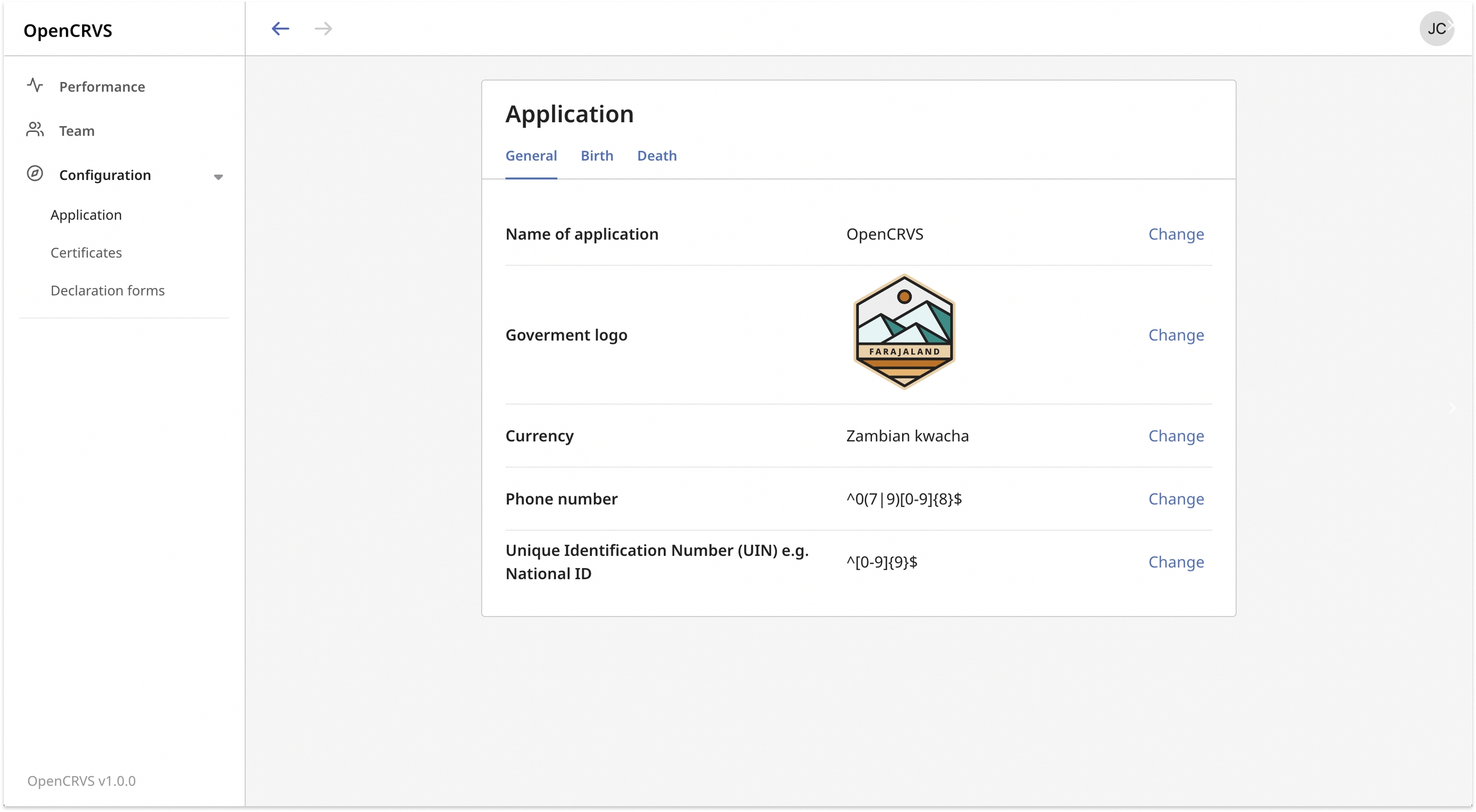5.1 Configure application settings
Before you start
Only a National System Admin can configure application settings
You can make changes to application configuration whenever you like.

Steps:
Change application name This appears on the top left header for all users. We recommend [Country name] CRVS.
Upload a logo This is used on the login and declaration review screens
Set your currency Set the currency for your country. This is used as a label for when fees are required for printing a certificate and on the performance dashboard
Set your mobile number regex This is used to validate phone numbers entered in the declaration form. For guidance please refer to www.regex101.com
Set your National ID regex This is used to validate national IDs entered in the declaration form. For guidance please refer to www.regex101.com